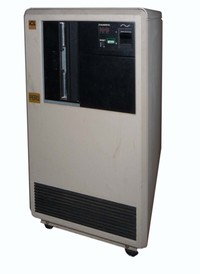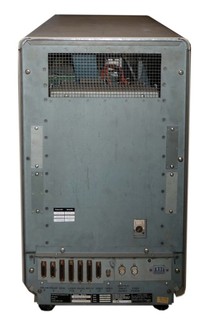|
ICL PERQ 2 T1 (or ICL 8222). The PERQ, also referred to as the Three Rivers PERQ or ICL PERQ, was a pioneering workstation computer produced in the early 1980s.
The workstation was conceived by six former Carnegie Mellon University alumni and employees, Brian Rosen, Jim Teter, Bill Broadley, Stan Kriz, Raj Reddy and Paul Newbury, who formed the startup Three Rivers Computer Corporation (3RCC) in 1974. Brian Rosen also worked at Xerox PARC on the Dolphin workstation. The PERQ design was influenced by the original workstation computer, the Xerox Alto. It was the first commercially-produced personal workstation, a prototype PERQ being shown at the 1979 SIGGRAPH conference. The origin of the name "PERQ" is from the word perquisite.
As a result of interest from the UK Science Research Council (later, the Science and Engineering Research Council), 3RCC entered into a relationship with the British computer company ICL in 1981 for European distribution, and later co-development and manufacturing. The PERQ was used in a number of academic research projects in the UK during the 1980s.
3RCC was renamed PERQ System Corporation in 1984. It went out of business in 1986, largely due to competition from other workstation manufacturers such as Sun Microsystems, Apollo Computer and Silicon Graphics.
The PERQ 2 (codenamed Kristmas during development) was announced in 1983. The PERQ 2 could be distinguished from the PERQ 1 by its wider, ICL-designed cabinet, with a lighter-coloured fascia, vertical floppy disk drive and three-digit diagnostic display.
The PERQ 2 used the same 16k WCS CPU as the PERQ 1A and had a 3-button mouse in place of the graphics tablet. It was configured with a quieter 8-inch 35 MB Micropolis Corporation 1201 hard disk, 1 or 2 MB of RAM and had the option of the PERQ 1's portrait monitor or a 19-inch, 1280×1024 landscape orientation monitor.
Due to manufacturing problems with the original 3RCC PERQ 2 (also known as the K1), ICL revised the hardware design, resulting in the PERQ 2 T1 (or ICL 8222).
The PERQ 2 retained the PERQ 1's OIO slot, but replaced the IOB with either an EIO (Ethernet I/O) or NIO (Non-Ethernet I/O) boards. These were similar to the IOB, with the addition of a non-volatile real-time clock, a second RS-232 port, and (on the EIO board) an Ethernet interface.
General features
Microprogrammed bit-sliced 16-bit CPU with 48-bit wide microword
Microcycle time. 170ns
Hardware-Implemented RasterOp, bit-map manipulation enabling bit-addressed raster-data to be moved at up to 31 Mbits/sec
Microprogramming features
AMD 2911 microprogram sequencer
Hardware assisted interpretation of byte coded instruction sets
256-word, dual ported, general purpose register block; 20-bit real address registers
16-level hardware-implemented expression evaluation stack
Barrel shifter and mask logic
16K × 48-bit Writable Control Store
Memory
MOS semiconductor RAM with parity checking
64-bit wide memory access via two 16-bit memory data buses; memory cycles up to 64 bits every 680ns
Integrated memory / display controller
One to one screen bit-map onto memory; bit-map can be realigned within store
Options 1 Mbyte or 2 Mbytes of RAM
Input/Output
I/O controller (for high speed devices) multiplexes up to five simultaneous DMA channels at up to 10 Mbits/sec each
16 bit I/O bus to processor
8-bit microprocessor for low speed device control
2 × RS23c-C interface, IEEE-488 1978 implementation of the General Purpose Instrumentation Bus; speeds up to 140 kbytes/sec
Hardware support for speech output
Our ICL Perq 2 has the following references:
F2362/11 375
F2362/16 375
F2362/03 280
Catalogue No: 8222/12/35
The Keyboard has a serial number of 255 and the monitor has a reference number of F2362/22 375
The whole system together with the software on 8" floppy disks and manuals were all very kindly donated by Benjamin (Ben) Mellor
Manufacturer: ICL
Date: 1983
Comment on This Page
ICL PERQ 2 T1 Workstation Manuals:
Other Systems Related To ICL PERQ 2 T1 Workstation:
This exhibit has a reference ID of CH17020. Please quote this reference ID in any communication with the Centre for Computing History.
|
|
Click on the Image(s) For Detail
|

















